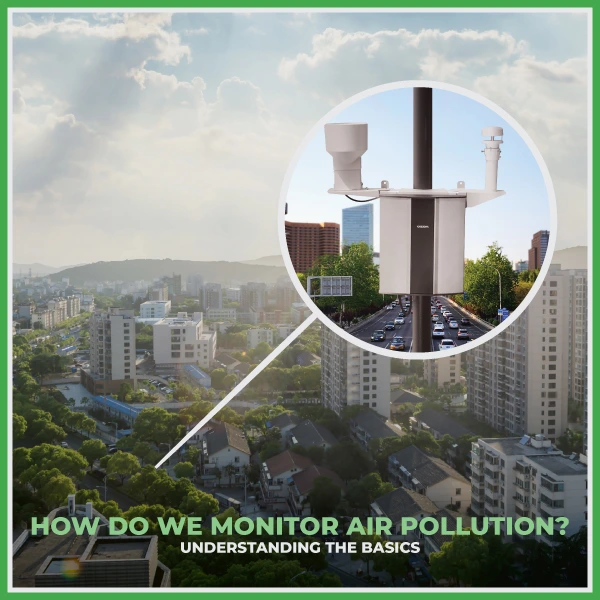Summary of Blog
When choosing a dust monitoring system, consider some essential factors that can make it ideal for safety and environmental responsibility. Even the smallest thing can affect the accuracy of the monitoring device. Factors like location, particle properties, calibration, sensors, price, etc., should be considered while making decisions. This blog explores the importance of accurate dust monitoring in managing air quality and ensuring workplace safety. It covers factors like sampling errors, flow rate, and particle characteristics that affect monitor accuracy. Emphasizing regular calibration, proper training, and advanced technology, the blog highlights how precise dust monitoring is essential for effective environmental policies and health protections.
Factors Affecting Dust Monitor Accuracy
Almost any workplace or business can potentially threaten health and safety from airborne particulates and dust. However, dust risks are not always visible to the naked eye, and the smallest particles can pose the greatest threat due to their capacity to move deepest into the lungs. Therefore, Effective monitoring is critical to implementing an effective risk management strategy. For this purpose, Reliable Dust Monitoring Devices play a crucial role in ensuring safety and compliance in environments where dust exposure is a concern.
Dust monitoring is an integral part of environmental management. It provides important information that can be used to evaluate the quality of air and its effect on living organisms, including humans. Dust monitoring cannot be underestimated in establishing proper environmental policies and workplace safety standards. This article investigates different factors affecting dust monitor accuracy, considering challenges and approaches in the environmental and technical aspects.
Sampling Precision Error
- Measuring accuracy error is another factor affecting dust measurement dependability. Some of the sources of these errors are inaccurate equipment calibration, operator skill, and variability in dust particle size distribution.
- To reduce such inaccuracies, dust monitors must undergo regular calibrations based on the manufacturer’s recommendations and are operated by trained personnel.
- In technical terms, The sampling precision error (a measure of reproducibility) for individual concentration measurements was independent of dust concentration but inversely related to the sampling period.
Flow Rate Influence
The airflow through a Real-time dust monitor significantly affects the measurement’s accuracy. Incorrect flow may cause recorded particulate matter to decline, causing oxygen concentrations to be underestimated or overestimated. Therefore, it is important that environmental personnel monitor and verify flow charts regularly.
Distribution Characteristics
The size, shape, and density of dust particles determine how monitoring equipment samples them. Monitors calibrated for one particle size may not reliably capture another, demanding an in-depth knowledge of the particulate matter under investigation.
Coefficient of Variation
- The coefficient of variation in dust monitoring reveals the degree of spread in data made over time. A high coefficient indicates increased fluctuation, which may undermine the data’s credibility.
- Understanding and regulating this component is critical for conducting reliable environmental assessments.
- In technical terms, the sampling precision error (SPE), the coefficient of variation of a single sample, is a fourth and perhaps the most convincing indication of agreement between samples.
- When the sample standard deviation (or the coefficient of variation) is known, the number of samples needed to obtain an average concentration with a given margin of error can be calculated from two equations.
Spatial Variability
Spatial variability refers to the differences in dust concentration from one location to another within a sampling area. This variability can be influenced by factors such as local topography, weather conditions, and human activities. Accurate mapping of spatial variability is critical for targeted environmental management strategies.
Conclusion
Dust control in various locations is critical for several reasons, including worker health and safety, compliance with environmental requirements, and productivity and efficiency. However, dust monitoring is essential for planning strategies to control dust using various methods. Real-time dust monitoring with dustroids, which are robust, rugged, and compact in design, provides accurate data based on different calibration stages.
Improving dust monitor accuracy requires addressing various technological and operational aspects. By focusing on these areas, environmental professionals can considerably increase the dependability of obtained data, allowing for developing more effective environmental protection strategies.
Accurate dust monitoring ensures reliable air quality assessments, helping to inform effective environmental and health policies.
To improve data accuracy, regularly calibrate and maintain equipment, train operators, and use advanced monitors with real-time correction capabilities.
Correct errors by regularly calibrating monitors, using multiple sensors for validation, applying statistical corrections, and maintaining equipment properly.
Dust can be measured using gravimetric sampling, real-time monitors, photometric methods, and impaction devices suited to different particle sizes and concentrations.






